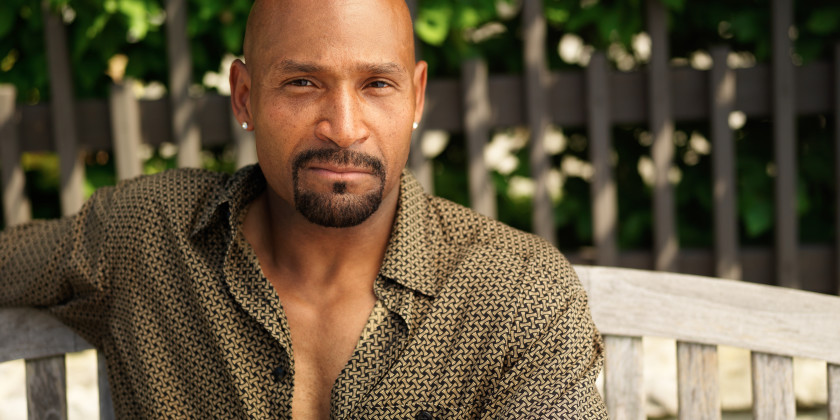“The older I grow, the more I distrust the familiar doctrine that age brings wisdom.” This quote by H.L. Mencken is proven to be true daily because of the injuries we suffer as we age. In 2008, close to 2 million people went to their doctors because of a rotator cuff problem1 .
Your rotator cuff is located in your shoulder area. It is made of muscles and tendons. It helps your shoulder to move and stay stable. Problems with the rotator cuff are common. They include tendinitis2 and bursitis3 .
Rotator cuff tendons can become inflamed from frequent use or aging. Sometimes they are injured from a fall on an outstretched hand. Sports or jobs with repeated overhead motion can also damage the rotator cuff. Aging causes tendons to wear down, which can lead to a tear.
Some tears are not painful, but others can be very painful. Treatment for a torn rotator cuff depends on age, health, how severe the injury is, and how long you’ve had the torn rotator cuff.
Treatment for torn Rotator Cuff includes:
- Rest
- Heat or cold to the sore area
- Medicines that reduce pain and swelling
- Electrical stimulation of muscles and nerves
- Ultrasound
- Cortisone injection
- Surgery
Is This Guide for Me?
-
YES, if your doctor has told you that you have a rotator cuff tear, which is an injury to one or more of the muscles and tendons in your shoulder.
-
NO, if you have any other type of shoulder or upper back injury, or an injury that is not related to the rotator cuff. Talk to your doctor to learn if this guide is right for you.
This guide will tell you about what research has found regarding the different choices for treating your rotator cuff tear. You can use it to help you and your doctor or other health care provider (nurse practitioner, physician’s assistant, physical therapist) discuss and decide what treatments are best for you.
Where does the information for this guide come from?
The information in this guide comes from a review of the many different studies on treatments for rotator cuff tears. It is not based on a single study but on many studies looked at together by a team of researchers, doctors, and other experts.
Understanding Your Condition
What is a rotator cuff tear?
The tendons of your rotator cuff can tear much like a piece of leather. Sometimes, the tendon is only slightly damaged or irritated. Sometimes, the tendon has a complete tear, which means that the tendon has torn away from the bone.
What causes rotator cuff tears?
The tendons of your rotator cuff can tear for a variety of reasons:
-
An injury, such as falling or being hit in the shoulder.
-
Overuse over time from repeated actions, such as lifting, painting, cleaning windows, or throwing.
-
Natural wear and tear from aging.
How rotator cuff tears affect your life
Tears in your rotator cuff are not life-threatening, but they can limit movement and cause pain.
Limited movement
Even small shoulder and arm movements, like combing your hair, putting on a coat, or lifting groceries, may be difficult and can hurt.
Pain
The pain can range from mild to moderate, to sharp. You may feel pain on top of and in front of your injured shoulder. The pain may spread down the outside of your upper arm. You may feel more pain at night, especially when you are lying on the injured shoulder.
Swelling
Swelling from inflammation is your body’s natural response to injury. Sometimes this swelling is inside of your body, and you cannot see it. This swelling is the most common cause of your pain.
Cracking and stiffness

Sports like basketball experience many rotator cuff tears.
You may hear clicking, cracking, or popping sounds when you move your shoulder, especially when lifting something heavy.
Understanding Your Treatment Options
Two types of treatments
There are two types of treatments for your rotator cuff tear. Patients get better with both of these kinds of treatments.
-
Non-surgical treatments (see below). This includes physical therapy and other treatments. These treatments are often used first, before considering surgery.
-
Surgical treatments. There are different kinds of surgery used. All surgery comes with specific risks.
Your doctor or health care provider may advise you to have one or both of these types of treatments for your rotator cuff tear. This advice will depend on the type and size of your injury.
The amount of damage to the tendon of your rotator cuff will help your doctors decide what treatments you may need and how long treatment may take.
Treating your rotator cuff tear without surgery
Rotator cuff tears are treated without surgery in these ways:
-
Undergoing physical or occupational therapy. A skilled therapist assists you with a variety of exercises and stretches to strengthen your shoulder muscles.
-
Taking oral medicines. These medicines may include either acetaminophen or “nonsteroidal anti-inflammatory drugs” (also called “NSAIDs”), such as ibuprofen or naproxen.
-
Taking a steroid as a pill or an injection.
Which treatment should I choose?
Many of these non-surgical treatments have been shown to help improve pain, weakness, and arm movement. However, there is not much information about which treatment type is better than the other.
Your doctor or health care provider may use several of these treatments at the same time to help you.

Tears in your rotator cuff are not life-threatening, but they can limit movement and cause pain.
There is also not enough research to know how these treatments compare with surgery in improving the use of your rotator cuff.
Your role in treatment
You play an important role in your recovery. Be sure to follow the instructions from your doctor or other health care provider, keep your therapy appointments, and do your home exercises. Talk to your doctor about what to expect during treatment and when you should start feeling better.
Repairing your rotator cuff tear with surgery
How long do I wait before choosing surgery?
There is not enough information from studies to answer this question. Your doctor or health care provider may explore your options with you based on the type and size of your tear and how long you have had the injury. Physical therapy may be enough to help improve the pain and weakness, or surgery may be a better treatment choice. In some cases, surgery is used when physical therapy does not improve symptoms.
How is the rotator cuff repaired during surgery?
In most cases, a surgeon uses stitches to connect the torn edges of the muscle or tendon back together or to connect the tendon back to the ball of your humerus. This is called “rotator cuff repair.”
In addition, your doctor may consider two other surgical treatments:
-
Removing loose fragments of tendon or damaged bone or cartilage that may be lodged in the joint. This is called “debridement” (pronounced dee-BREED-ment).
Three types of surgery
What type of surgery should I choose?
The research found that:
-
There is no difference between the open, mini-open, and arthroscopic types of surgery in the improvement of shoulder function. They all work about the same. However, arthroscopic surgery usually requires less recovery time.
-
A few studies found that:
-
Some patients who had mini-open surgery returned to work or sports about 1 month sooner than those who had open surgery.
-
Is surgery safe?
All surgeries come with some risk. You and your doctor can decide what risks may exist for you based on your overall health. Rotator cuff surgery is safe for most people. The most common problems are infection and re-tears.
What type of treatment should I have after my surgery?
Although most doctors agree that you should have rehabilitation therapy after your surgery, there is not enough evidence to tell you which type is best. Talk to your doctor or health care provider about what kind of rehabilitation therapy is best for you.
Making a decision
Ask your doctor
-
Given my tear, what benefits and harms for using non-surgical or surgical treatments should I consider?
-
If I need surgery, given my tear and my other medical conditions, which surgery (open, mini-open, or arthroscopic) do you think would be best for me?
-
How long do you think it will take me after treatment to return to my activities?
-
Will these treatments help my rotator cuff for many years?
-
When should I expect my pain and other symptoms to feel better?
A healthy lifestyle is something we all should strive for. Sometimes injuries occur in living an active life. Jay Harold believes Ben Franklin’s quote “Write injuries in dust, benefits in marble,” is a good way to look at your options on Rotator Cuff Tear.
Click this link to get free Health and Wealth information to improve your life. Enjoyed this post? Share it and read more here. Questions? “Ask the Pharmacist a Question!” Jay Harold is always looking out for your health and wealth.
Bibliography
- http://orthoinfo.aaos.org/PDFs/A00064.pdf
- https://medlineplus.gov/tendinitis.html
- https://medlineplus.gov/bursitis.html
- https://www.ncbi.nlm.nih.gov/pubmedhealth/PMH0004959/#consrotator.s3





